Google Shopping Trends and Optimization Insights for Q4 2021


Launched in December 2002, Google Shopping is fast approaching its 19th birthday. The service underwent some name changes over the years—Google Product Search, Google Products, and my personal favorite, Froogle—as well as more than a few updates to the service itself, of course.
Of those updates, perhaps the most impactful and noticeable is that Google Shopping ads are now everywhere—Google Search, Google Search Partner sites, Google Images, and the Google Display Network (Gmail, YouTube, and Google Discover). Their priority placements and extensive reach speaks to their value and importance for advertisers and consumers alike, within the Shopping tab and far beyond.
For brands offering a physical product of almost any type, search ads alone are simply no longer enough. In this article, we’ll explore current trends, holiday-specific expert tips, and top considerations for making Q4 2021 your best Google Shopping holiday season yet.
While many of us still think of Black Friday as the official ‘kickoff’ to the holiday shopping season, shoppers got an early start in tumultuous 2020, and that pattern is continuing. Holiday 2021 has its own share of concerns to account for, including ongoing supply chain concerns and the COVID-19 Delta variant.
In a recent CreditCards.com survey, 51% of respondents said they planned to start their holiday shopping before Halloween this year. As for where they’ll be doing that shopping, 62% plan to “buy mostly online.”
Responses to Tinuiti’s own 2021 Holiday Consumer Spending Trends survey paint a similar picture:
News programs and headlines abound urging shoppers to start not just early, but now! As an advertiser, it’s important to ensure that your Google Shopping ads are prepared for this influx of shoppers in a holiday mindset.
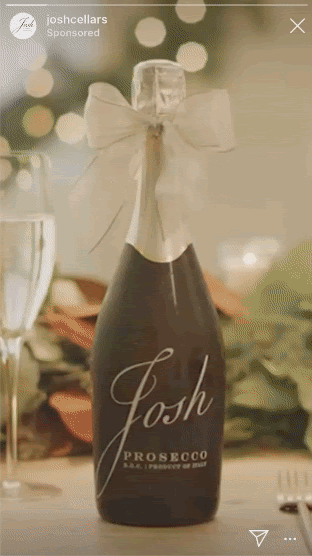
Chances are good that you’re already crafting your ads, emails, website copy and more to appeal to evergreen shopper personas you’ve identified, and refined over the past several months or years. Holiday is not a time to abandon those personas, but it is a time to additionally consider key holiday shopper personas.
Consistency in branding is still important, particularly as some of these shoppers will overlap with your existing audience. However, you can maintain your brand standards while designing creative that speaks specifically to their needs in that particular holiday role.
Holiday shopper personas aren’t specific to your brand itself, but the items they’re shopping for may align perfectly with your brand. Let’s consider two examples:
This shopper is on the hunt for any and all items that will make their gathering a memorable success. Think of which items in your catalog might align with their needs, and design Google Shopping ad campaigns that will reach and resonate with them.
Some items to consider include:
If we were choosing our yearbook superlatives, this shopper would be voted “Most Likely to Search #selfcare on Instagram!” However, it’s important to also consider that the holiday self-gifter might not be in the habit of #treatyoself year-round.
For many, picking up a few gifts for themselves during the holidays is largely motivated by the season’s strong promotions. Shoppers know that if they buy these items now, they’re more likely to get a great price, and avoid the dreaded “Sold Out” message so common this time of year. With that in mind, don’t only consider the more obvious ‘gifty’ items on your website for your Shopping ads, but also those that are more practical indulgences.
Some items to consider include:
Tinuiti research shows that 85% of holiday shoppers plan to do at least some of their shopping in-store, with the majority saying they will first check availability/stock before going to stores. If shoppers can’t quickly determine if an item is in-stock without picking up the phone, your chances at securing the sale will have gone down dramatically.
Many shoppers aren’t back to casually browsing just yet, but are willing to head to brick-and-mortar stores if they’re sure the most important items on their list are in stock before making the trip. Make that certainty easy for them by enabling location extensions.
From animated GIFs to slideshows, motion built for mobile captures shoppers’ attention, and conveys a lot of information in a short period of time.
Consider primary placements that take up as much mobile real estate as possible, including 1:1s, 9:16s, and 4:5s. If you’re working almost exclusively with simple, static assets, we recommend leveraging the creative tools within Ads Manager, including:
Prioritize any type of motion possible; motion and static ads within the same campaign typically leads to a higher conversion rate.
As we just mentioned, video is vitally important. But, it doesn’t display everywhere Google Shopping ads are shown, including the right-hand rail.
We have seen a higher conversion rate when you’re showing a static and animated GIF in the same campaign. If you’re running a video campaign, always try to have the static ad there as a catch-all for the placements that don’t have video optimized for them.
Shoppers naturally rank free shipping and returns, low prices, and special offers or perks among the most important factors they consider when shopping directly with brands, but those aren’t their only considerations.
As reflected by the responses in the chart above, shoppers are looking not just for products or services, but more largely for unique experiences. Whatever those unique values are that shopping with you offers, be sure to call those out in your Google Shopping ads.
These differentiators may include:
While it is expected that in-person gatherings will see an uptick this year compared to last, as was the case before the pandemic, shoppers often send holiday gifts to faraway friends and family members they won’t be seeing. Advantages like free and easy returns and exchanges, and an elegant unboxing experience, can be the deciding factors in which retailer they choose to send gifts from.
The types of items people are purchasing this year may be slightly different than typical holiday seasons because so many are making plans for their first vacation in 2+ years, or shopping for someone special with a getaway on the near horizon.
If you have items that appeal to these shoppers’ needs, consider highlighting categories that pair well with travel destinations and plans in your Google Shopping ads, with complementary ad copy.
Some items to consider highlighting in travel-themed ads include:
Be sure to maintain consistent branding throughout all your assets; by testing too many drastically different things, you’ll risk people not being able to recognize your brand.
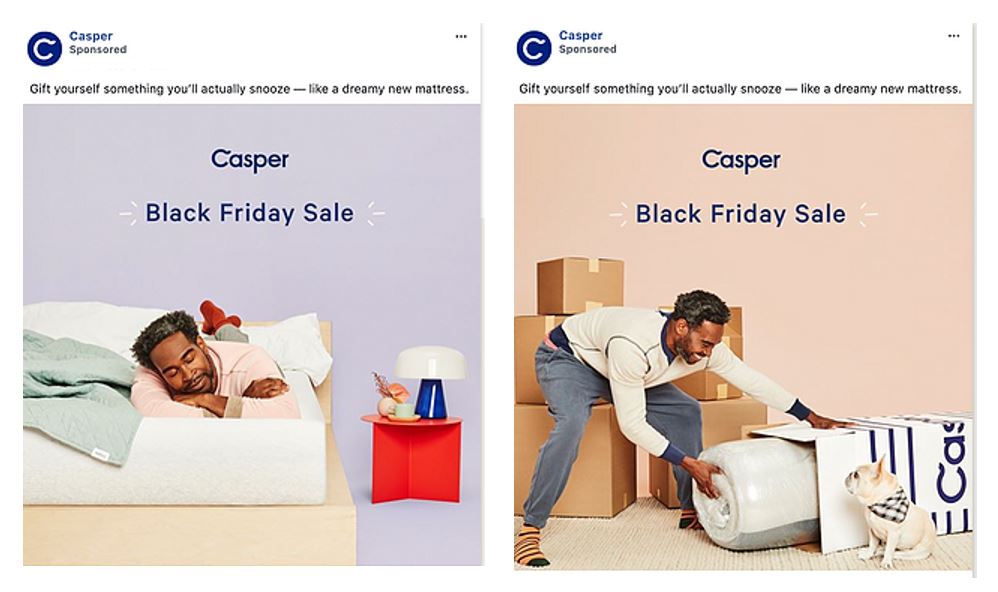
That said, establishing a holiday brand identity is still important; you just want to ensure these ads feel like a ‘holiday version’ of your evergreen ads, and not something completely disconnected. Consider overlays and graphics that are holiday-specific, but maintain certain things that are established brand identifiers (ie. logo shape and/or color).
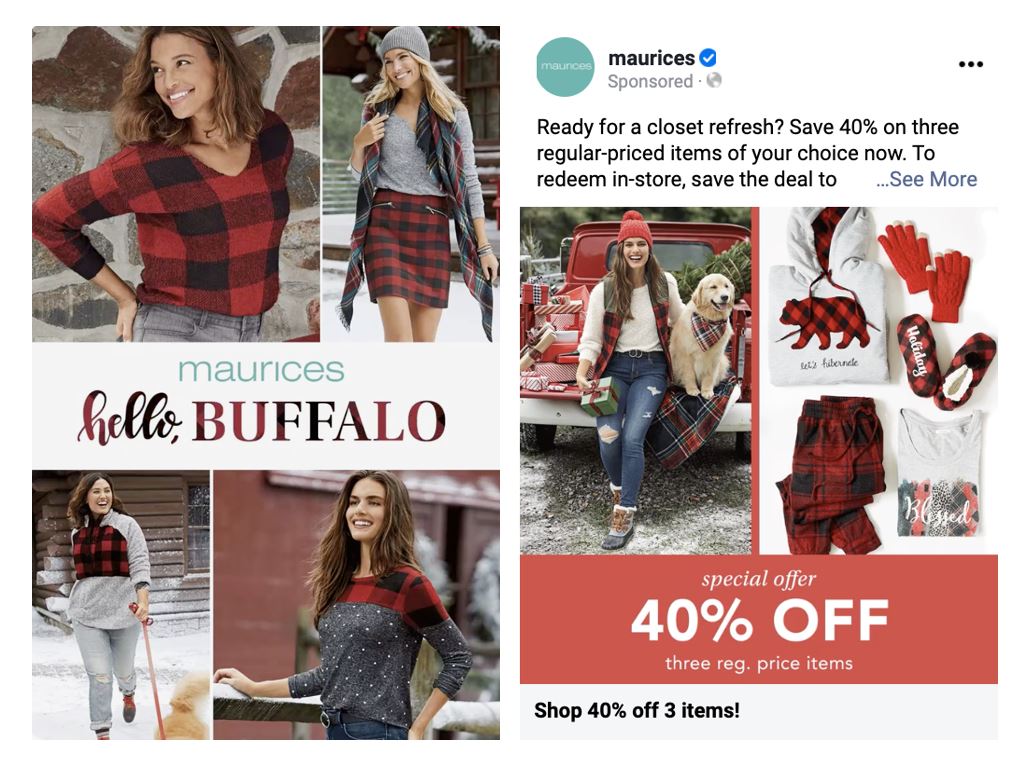
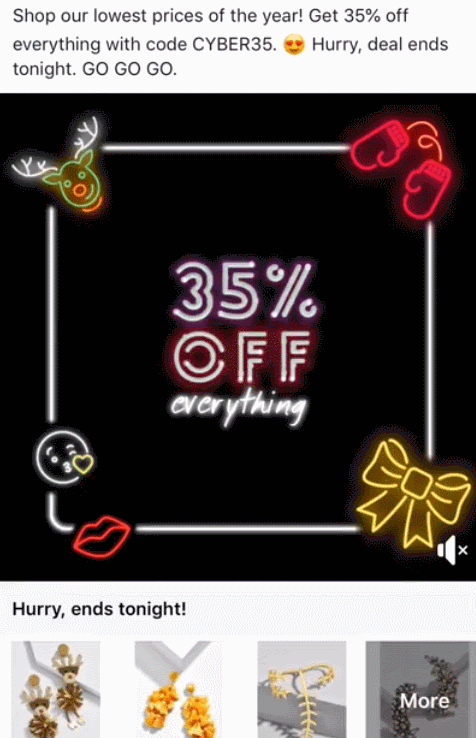
Not running a promo, but want to be seasonally relevant? Gift guides are a great way to get some low CPCs (costs per click), and feed your DPAs (dynamic product ads), by having people shop around and play within these shopping formats. Among our top recommendations is Collection ad formats, and if you’re focusing on email, you should consider leaning into gift guides in email as well.
While the majority of gift card clicks do tend to be on text ads, PLA gift card ads are growing. If you normally exclude gift cards from your PLA offerings, now is the time to temporarily turn that off so you can reach the higher number of people searching for them.
Gift Card findings from Tinuiti’s Holiday 2021 Trends report include:
Regularly monitor for potential restrictions that may impact shoppers across different parts of the country, adjusting your ads for those areas accordingly. In example, if a specific state experiences a rise in COVID cases, they may place temporary limitations on in-store shopping.
These restrictions may continue to change throughout the holiday season, so be sure to monitor for updates regularly.
75% of respondents to our Holiday 2021 survey said they will do at least some of their gift shopping on their phone this year, making mobile-first ads a must. The importance of ensuring your site, and your ads, are optimized for mobile is only growing.
Keep in mind that the majority of shoppers on the social front are using mobile devices, as well. When creating and optimizing assets, be sure to have images and lightweight motion creative, like GIFs, optimized for story placements.
Conversion rates (CVRs) do tend to fall after ‘last ship dates’, so you’ll want to scale back on aggressive advertising at that stage, but it’s important that you don’t turn off ads completely.
Since some people won’t be seeing each other in person this year, just like last, that final shipping date isn’t always quite as important as it used to be. If shoppers don’t need the item in their hands to wrap and slide under the tree, the recipient not getting the package until the 26th or 27th isn’t as big of a deal.
This is especially true for shoppers who ‘go home for the holidays’ and have an even earlier personal final ship date—the date by which they need all their packages to arrive before they travel.
Additional considerations:
There are 3 primary audiences we recommend remarketing to during Q4 in particular, in addition to any other remarketing efforts you might already have planned.
These three audiences, and some key things to consider about them, include:
Simply put, advertising in Q4 is going to be more expensive than advertising in Q3, even prior to the pandemic shakeup of 2020. Generally speaking, we expect clicks, spend, and average CPCs to increase 20-50% in Q4 compared to Q3.
This year, another consideration to make is that there is increased competition compared to Q4 2020. Last holiday, many brands were still scaling back their advertising spend, which led to lower costs for advertisers that were still active. Additionally, the 2020 election and other high-profile events the country was experiencing collectively impacted many aspects of our lives, including how and when we shop, and how much we spend.
While the COVID-19 pandemic is still a significant concern in 2021, unlike last year, millions of people are now vaccinated, and looking forward to spending more time with family and friends. As such, we expect an uptick in in-person gift-giving this year on the whole, making that final ship date and/or store availability more important than it was last year for some.
In addition to strategic use of similar audiences and custom intent audiences, let Google do some of the heavy lifting by leveraging in-market audiences Google has already defined for holiday shoppers. These include, but are not limited to:
We recommend getting your promotions feed together early, with effective dates already set in advance of a promo start time. If possible, make the promo active on your site a few hours or so ahead of the sale start time; this is just to ensure everything is working as intended, and gets approved in time of the promo ads actually going live. In Q4 especially, every hour counts, particularly for limited run promotions.
Holiday 2021 doesn’t carry as many fears and considerations as 2020, thanks largely to the availability of COVID-19 vaccines, but this year isn’t 2019, either. Our shopping habits have been permanently altered, as has our general awareness that something with monumental, global impact can indeed happen with little warning. We not only shop differently, we are different.
To better account for the uniqueness of 2020 data in your 2021 forecasting, consider using a blend of 2019 and 2020 data to reach a more accurate number.
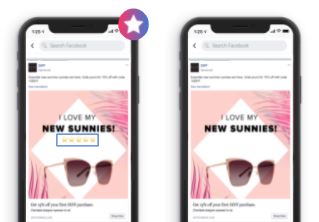
To be certain, much of your testing should already be done. Holiday is not the time to go fully experimental. That said, given the higher volume of traffic, it does present a unique opportunity to try some new things that don’t compete with your data-driven, ‘tried and true’ campaigns, like experimenting with Smart Shopping if you haven’t yet.
Just keep in mind that any change you make resets the learning phase. Additionally, ads often take longer to get approved during the holiday season, and can be more likely to get disapproved, as well. With that in mind, we recommend that you test sparingly, and use single variable testing when you do test. This gives you a little taste of testing during high-traffic holiday, without risking ruining the whole recipe.
As recently reported by Forbes, BNPL is expected to reach $100B in 2021. If your site offers a Buy Now Pay Later solution (ie. Affirm, Afterpay, and Klarna, among others), be sure to highlight that in your ads, particularly for higher cost items customers would be more likely to finance.
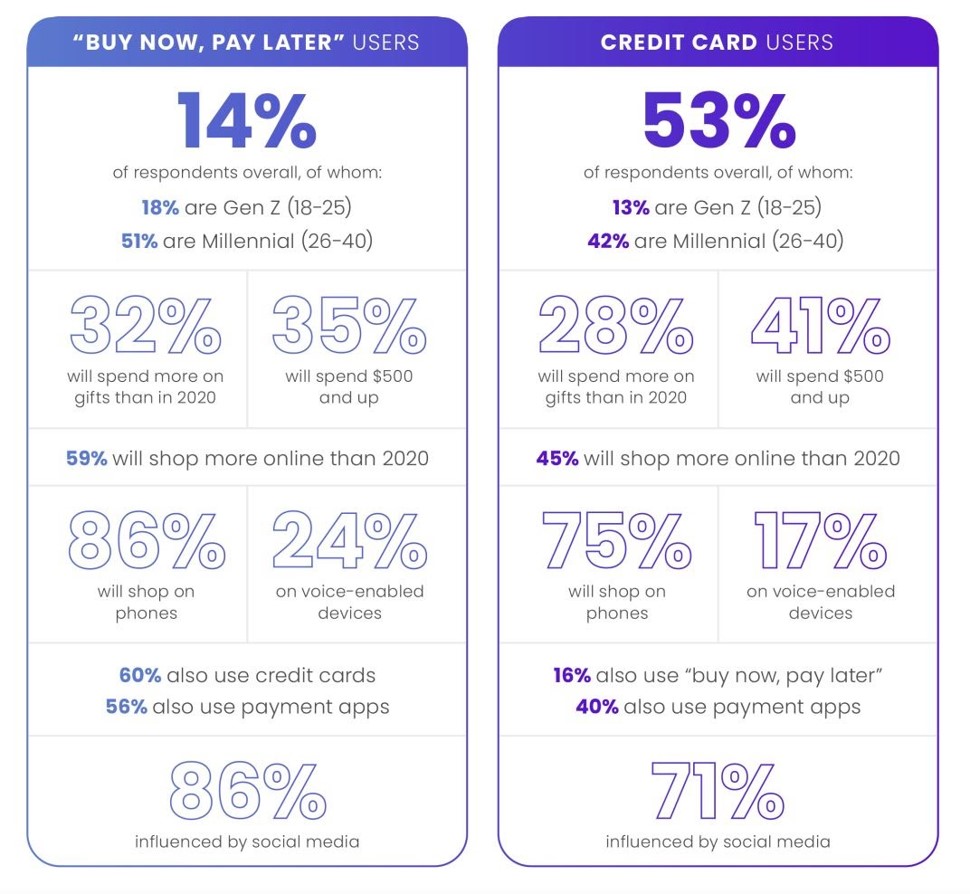

The goal isn’t to panic shoppers, rather to ensure they don’t miss out on a special promotion, limited stock item, or shipping deadline.
Consider any supply chain issues you might experience this year, and how those issues could impact your stock on key items in your catalog. May there be shipping delays on certain items? Is your current inventory of a particular product the only inventory you can guarantee you’ll have ahead of final ship dates? If so, call that out in your Google Shopping ads. Shoppers will appreciate that you’ve let them know not to wait on items that might be “musts” on their list.
Some examples to consider:
If your ads are focused on a particular sale or deadline, shipping or otherwise, consider adding a countdown function for any time period longer than 2 days.
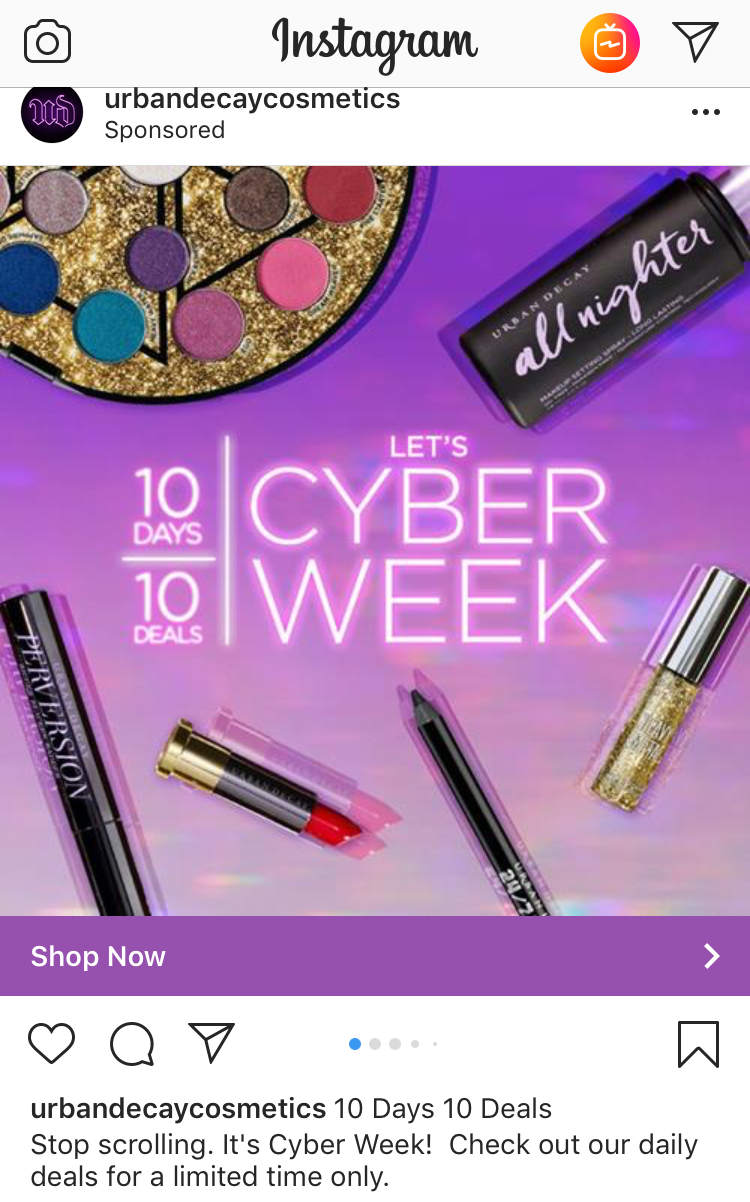
When the promo is popping, it gets people shopping! Ensure the actual promotional element of your ad isn’t hidden in busy background imagery, and fully stands out from all other text. Give the promo room to breathe on the page, finding or developing assets where the promo lives separately from the product, but both are featured.
In addition to including your promotion within the creative, it’s also important to make sure your promotional ad copy is included in the top ad copy that everyone sees. If you include it in the smaller section of ad copy, you risk people not reading it.
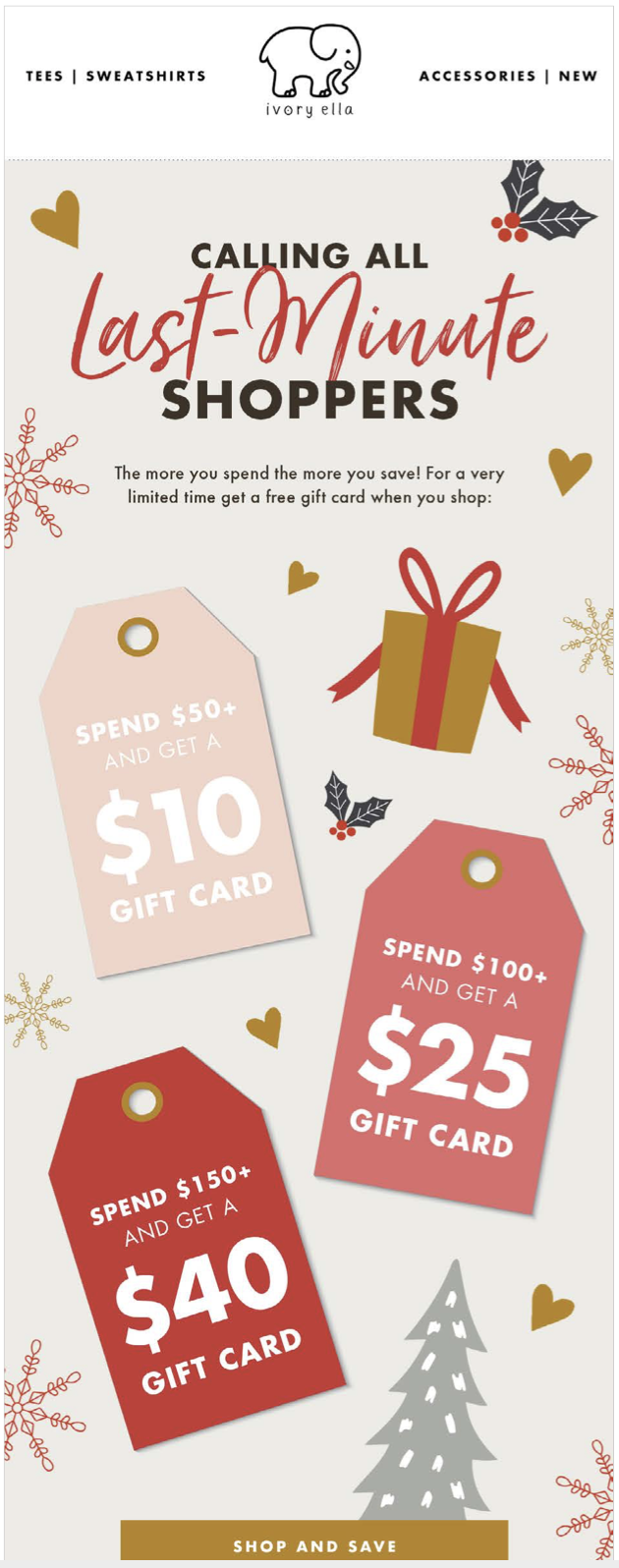
If your brand doesn’t typically run a lot of promotions, be sure to make mention of that in your ads, particularly if the promotion you’re advertising is considered your biggest or best of the year.
You can also draw attention to the rareness of a promotion within a certain category, or for a specific product, even if sales and promos on your site as a whole aren’t rare. Is there an item or collection on your site that almost never goes on sale, or perhaps has never been on sale? Include that information prominently in your ad so interested shoppers are aware, and don’t miss out on the opportunity to save.
Quality Assurance (QA) is important year-round, but in the hustle and bustle of the holiday season, it can be all too easy to rush the process. But all those moving parts and fast-changing promotions is exactly why you have to make time to run QA. A conversion-packed Q4 is essential for the ongoing success of many businesses. If you think you don’t have time for QA, you definitely don’t have time for your ads to be improperly set-up, or not running at all.
Today, Google Shopping is far more than a price comparison tool; it’s inextricably part of how we shop. Google has integrated Shopping into the overall Google experience in a way that removing Shopping ads from the equation would be like trying to get the sugar out of an already-baked cake. Even if you could do it, why would you want to?
Consumers want the sugar. In a world of text across myriad digital screens, Shopping ads offer the easy-to-digest eye candy that shoppers crave. With all the details that matter most front-and-center—including image, price, retailer, and more—shoppers can quickly make informed decisions. The internet is increasingly leaning toward all things visual, and Shopping ads are a big part of that.
Want to learn more about how Tinuiti can help your brand realize Google Shopping success? Contact us today to chat with an expert!
